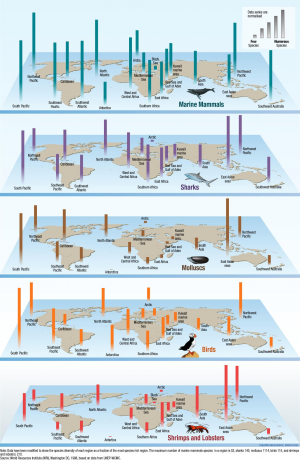Evolution of Land Animals
Following the fossil record, which is a history of animal change over time preserved in layers of rock that can be accurately dated, scientist have found evidence that animals with spines (called vertebrates) first evolved in the seas and then moved on to land. Fossils have been found that show fish developing into amphibians and moving out of the water and onto the land.
530 Million Years Ago (mya)
The oldest fish fossils date from 530 mya had soft, boneless bodies, no jaws, and plate-like armour covering their bodies for defense. Fish slowly evolved jaws, gills, swim bladders, and many other structures.
419 MYA
Bony fish evolved, with the earliest fossils found as old as 419 mya. Bones were a very important step in strengthening fish bodies allowing them to live in different environments and feed on new prey.
395 MYA
Intermediate species fossils are found starting 395 mya with lobe-finned fishes (those with fins joined to their bodies by single bone joints) and slowly toward tetrapods, animals with 4 limbs. These animals began to be able to drag themselves in and out of the water using their limbs, but they could not yet walk on land since these structures were still too weak to support their weight. During this period, fish swim bladders also began to develop, in some species, into primitive lungs.
340 MYA
The first amphibian fossils are found in rock 340 million years old and show that tetrapods were able to evolve into animals that could walk on land and breathe air. Amphibians can’t live far from water since their skins are not waterproof and their eggs only hatch underwater.
315 MYA
The first lizards developed around 315 mya. They finally could begin to take over the land since their skins were waterproof and their eggs could be laid outside of the water. Lizards quickly spread out and covered much of the earth.










